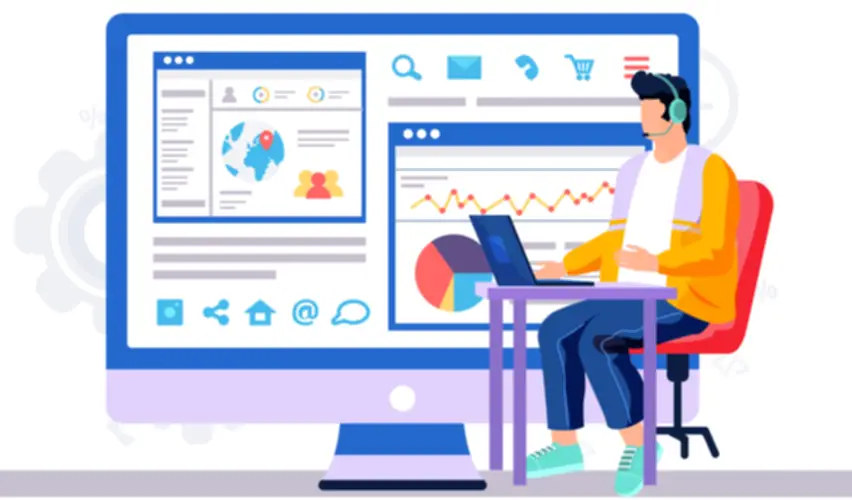All stakeholders, from gross sales managers to IT, can easily understand decision guidelines in a tabular format. Because of the useful https://www.globalcloudteam.com/ visuals, staff members can intently collaborate on the event of choice logic. Many processes have an result on multiple teams—sales, advertising, accounting, and more—Decision Tables give everybody a possibility to participate in process improvement. In this example, you’ll be able to see how a loan firm process several varieties of mortgage requests.
Dictionary Entries Close To Decision Table
They are additionally easier to change decision table since it’s a relatively simple matter to add circumstances, guidelines and actions to a table. It reveals circumstances and actions in a simplified and orderly manner. By presenting logical various programs of action beneath varied operating circumstances, a call desk permits an individual to assume through a problem and present its answer in compact notation. However, it has some notable drawbacks, such as elevated time consumption, potential safety and efficiency scanning points, and the requirement for skilled testers to maintain the tables. Despite these drawbacks, determination table testing is highly really helpful, given its capacity to offer comprehensive coverage for different eventualities. The use of determination tables in software program testing presents a number of benefits, together with.

Best Practices For Using Choice Tables In Automated Processes

From the above two examples on the choice desk, you should be conscious that it is the finest approach to determine and resolve any potential issues within the software program software. Now learn the under part to get an concept of its advantages. On the far right of a choice table is a column for annotations. This is only a place to retailer notes and is simply seen to the modeler. You can change the order in which inputs and outputs appear in the column by shifting them left or proper. Decision logic defines how the output of every decision is derived from its inputs.
Utilizing Choice Tables In The Process Designer
The template definition contains an expression(TemplateInstanceExpression) which has the parameters for the expression. When a brand new case edge is added to a condition node, the new case edge should use a template todefine the worth. Decomposition of advanced situations into less complicated ones is a common engineering and IT task. OneR is the 1R classifier (see Section 4.1, web page 86) with one parameter—the minimal bucket measurement for discretization. Figure 11.22 exhibits its output for the labor negotiations data. Beneath the rule the fraction of training cases correctly classified by the rule is given in parentheses.
Advantages Of Choice Tables In Software Testing
The possible actions to take when sure business choice is made. Decision tables may also have an initialization rule (init rule) which may be issued earlier than theconditions within the desk are checked. JRip implements RIPPER (see Section 6.2, web page 208), together with heuristic world optimization of the rule set (Cohen, 1995). NNge is a nearest-neighbor method for producing rules using non-nested generalized exemplars (see Section 6.5, page 246). M5Rules obtains regression rules from model bushes built utilizing M5′ (see Section 6.2). There are additionally ways of expressing data declaratively in such a method that an inference engine can generate an appropriate sequence of actions to unravel numerous related problems.

Three Extra Rule Attributes For Ruleset Or Ruletable Definitions
Such components instantly influence the performance of the software applications as a end result of different mixtures of situations or inputs will lead to diverse test outcomes or actions. It is essential that testers and builders perceive and handle such circumstances and inputs to make certain that developed software applications operate precisely. Add a rule for each potential state of affairs of an enter and output. The finish outcome shall be a call table with all of the relevant situations for the choice logic.

Once you have created the Input-Output model, you go into the Decision Table Designer and start adding individual columns for conditions and outcomes. To add more columns, click on the “+” sign in the header of the column you need to add a brand new column after. You can add columns at any time through the creation of your rule.
Define Choice Logic With Decision Tables
- Therefore, if none of your eventualities are met, no action is taken to return the outcomes.
- The logic record lets you discover all the decision tables in a mannequin.
- In a call table (or induction table), knowledge is organized in a spreadsheet format, utilizing columns and rows.
- If you additionally must return a result in your decision that none of the above conditions have been met, add a Default (Else) Row.
- Click on the green operator button to display an inventory of accessible operators and functions.
- The finish outcome will be a decision desk with all of the relevant scenarios for the decision logic.
Rules inside decision tables are processed one by one within the order theyare positioned in the table. If at least one condition returns false, all other conditionsin the identical row are ignored. Absence of a parameter in a condition cellis interpreted as a true value. Executable rule models are embeddable models that provide a Java-based representation of a rule set for execution at build time. The mannequin is low degree and lets you present all essential execution info, such because the lambda expressions for the index analysis. You should typically create just one choice desk spreadsheet, containing all necessary RuleTable definitions, per rule package deal in Business Central.
It encompasses details about varied guidelines, take a look at situations, and inputs as perceived by the tester, represented as ‘Yes’ or ‘No,’ ‘True’ or ‘False,’ ‘Y’ or ‘N,’ and similar variations. This proves instrumental in facilitating each easy and complicated software program testing. Outputs are the result(s) that a call desk involves after evaluating the inputs.
A semantic determination desk is modeled based on the framework of Developing Ontology-Grounded Methods and Applications (DOGMA[3]). A semantic choice desk uses modern ontology engineering applied sciences to reinforce traditional a call desk. It offers a method to seize and examine determination makers’ concepts, as well as a device for refining their choice knowledge and facilitating information sharing in a scalable method. Decision tables are used for numerous purposes and usually are not simply restricted to software testing. The payload of the API accepts an XML file of the choice desk definition, the table name and the take a look at input values as JSON and returns the output values as JSON. Decision tables are created within the Logic tab with a default input and output.
Instead, the choice desk standardised the logical process and permits the consumer to insert the values in each the circumstances and actions associated to the decision. The underlying premise for using a choice desk may be structured as an if this occurs, often do this proposition. Decision desk testing is a approach to test software program by making an attempt out different combinations of inputs. It is particularly helpful for testing complicated business logic, the place the system’s conduct changes depending on the precise inputs. Different types of choice tables are used in creating and testing software applications.

It is instrumental when testing the habits of a giant set of inputs where the system’s conduct differs with each set of inputs. Decision tables are straightforward to understand and use, and they can provide good coverage and illustration. Decision tables are XLS or XLSX spreadsheets that you can use to define enterprise rules in a tabular format and you could addContent to your project in Business Central.
The desk is conceptually divided into two elements, an element with circumstances and a part with results. Conditions are created primarily based on input values, so the condition columns are tied to the enter model. On the other hand, the outcomes are the values we want to obtain after evaluating the decision, so the result columns are tied to the output mannequin. In the input-output mannequin, you set the construction of the information and what values will go into the rule and what values will be received from it. Decision tables are straightforward to understand and use and can be utilized to make sure good check coverage for complex business logic. They can also be used as a reference for the requirement and performance improvement.
